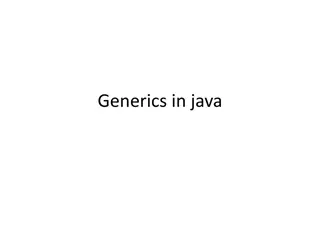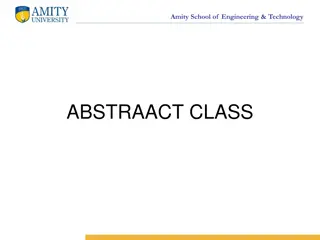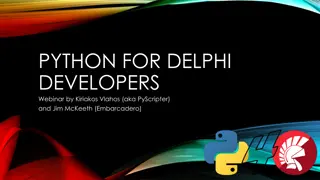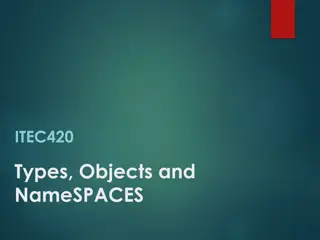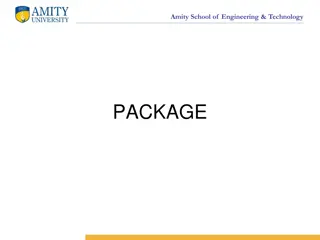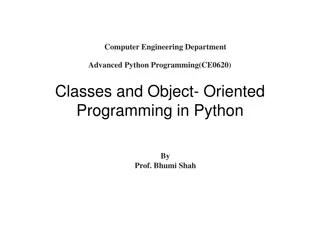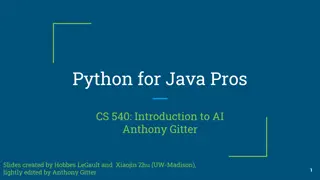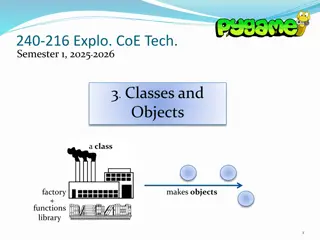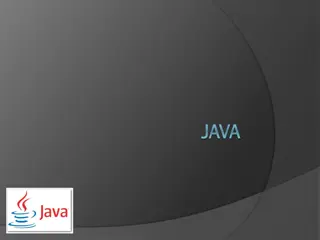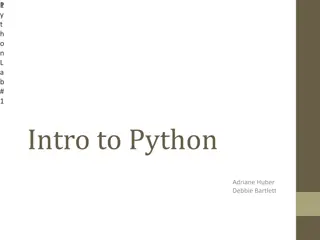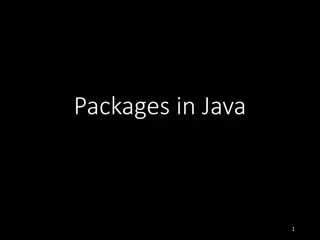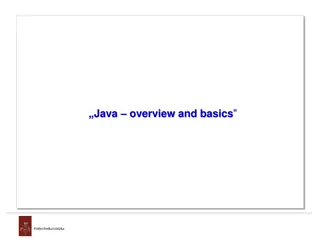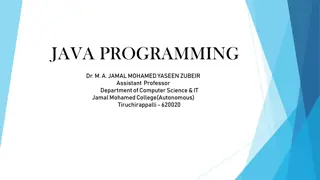Understanding Classes and Objects in Python and Java
Python and Java both utilize classes and objects in their programming paradigms. While there are syntax differences, the fundamental concepts remain similar. Fields and constructors are key components in defining classes, with Python using shared fields until assignments are made and Java focusing on individual object fields. Object methods can be used in a consistent manner across both languages, showcasing the versatility of classes as data types.
Download Presentation

Please find below an Image/Link to download the presentation.
The content on the website is provided AS IS for your information and personal use only. It may not be sold, licensed, or shared on other websites without obtaining consent from the author. Download presentation by click this link. If you encounter any issues during the download, it is possible that the publisher has removed the file from their server.
E N D
Presentation Transcript
Module 7 Module 7 Part 5 Part 5 Classes and Objects
Overview Python and Java both feature classes and objects in much the same way, with only syntax differences between them Python: Fields declared in the body of a class belong to the class These fields are shared among all objects of that class until an assignment is done Constructor is called __init__() The keyword to specify the object itself is self An object can have fields added or removed after the program starts Java Fields declared inside the body of a class belong to individual objects Only static fields belong to the class itself Constructor must have the same name as the class The keyword to specify the object itself is this All object fields are set in stone once the program starts
Declaring classes Notice we use constructor overloading to achieve in Java what we can do in Python using default parameters Notice also that Java constructors (and methods) do not have an obligatory self parameter
Creating and using objects The syntax for creating objects, accessing their fields, and accessing the fields of the underlying class differ, but the concepts are the same
Using objects methods We can use object methods very much the same way in both languages Notice that methods that aren t inside of our Driver class must be non-static
Classes are data types Don t forget that, when you write a class, you are creating a new data type As such, you can create collections of that data type In the examples below, after we ve created a Car class, we can freely create arrays or ArrayLists of Cars.




